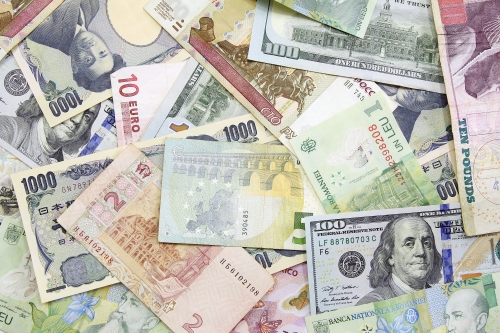The Chinese are up to something.
As we discussed recently, Chinese president Xi Jinping is pulling the trigger on a centuries-old plan to become the new global hegemon.
They call it the ‘Belt and Road Initiative’…and it’s an aggressive political manoeuvre disguised as an economic project.
If you’re not familiar, the idea is to rekindle the ancient Silk Road and reroute global trade flow through Chinese-operated paths.
For a quick refresher, check out our three-part series on the topic:
- Part I: The Ancient Silk Road
- Part II: Byzantines, Mongols and the Black Plague
- Part III: The Belt & Road Initiative
The operation could easily be one of the largest and most ambitious campaigns since World War II…and the Chinese have just sounded the war horn.
Personally, I’m both excited and nervous to see how this plays out. As an American, I’ve been privileged to belong to the world’s most powerful economic powerhouse. It comes with certain benefits like financial confidence and solid growth. It means that global economic trends are generally in my favour.
And those benefits typically trickle down (to a degree) to America’s allies, like New Zealand.
This new Belt and Road Initiative threatens that entire way of life. In its place, you’ll soon discover a Sino-centric empire.
No longer will English be the lingua franca. Mandarin will take its place.
The yuan will replace greenbacks as the international commerce currency.
Trade winds will blow east rather than west.
A new era
One of the most important steps in the plan is to secure the yuan’s place as a global currency.
To succeed, the Chinese first needed to make the yuan part of the IMF’s SDR currency basket.
SDR stands for Special Drawing Right. You can imagine an SDR as a banknote made up of five strips from other currencies: a US dollar, a euro, a pound sterling, and Japanese yen and a Chinese yuan.
The strips aren’t necessarily the same size — the IMF weights them differently based on their respective economic impact. So the biggest strip is the dollar…followed by the euro. Then the other three would be narrower.
Up until October 2016, there were only four components to the SDR. The Chinese yuan was added more recently.
The IMF uses SDRs as a way to lend and borrow between governments. And governments will often hold on to SDRs as a more secure way of holding onto reserves.
When the yuan was added in 2016, it was a major encroachment on the dollar’s territory.
The front lines were pushed forward.
And earlier this year, unusual activity in Chinese money presses revealed China’s next planned assault. [openx slug=inpost]
Hot off the press
Cash transactions have drastically slowed in China.
They have been replaced by mobile payments, particularly through the app to end all apps — WeChat.
With this app, Chinese folks can buy a coffee, pay their electricity bill, subscribe to a newsletter, whatever. It’s been quite revolutionary. And as a consequence, cash has become fairly passé.
So when Chinese printing presses received the order to start printing cash at maximum capacity earlier this year, it was highly unusual and surprising.
But it wasn’t yuan that they were printing. They were receiving orders for Thai baht, Polish zloty and Malaysian ringgit among others.
For the most part, this activity has been kept under wraps. It hasn’t received much attention in the mainstream press. The wire was quiet.
But workers in these paper mills and mints knew something was going on. Suddenly, they were working weekends. Working overtime. Hundreds of new hires. All in what most considered a dying industry.
So why is it important?
These countries — mostly members of the new Belt and Road Initiative — are placing their trust in China. They’re putting significant power in the hands of the Chinese to control the lifeblood of their own local economies — currency.
This signals a fundamental shift in how these countries intend to do business.
No longer are they sycophantically serving the American leadership. No. Now they’re part of a new regime. A regime where they’re valued contributors. A regime where the major players invest in their economies. A regime led by the Chinese.
A rebellion.
And like the American rebels signing the Declaration of Independence, Belt and Road Initiative members are declaring their new allegiance.
It’s a short hop from putting China in charge of your money to making your money Chinese. And if the Initiative is successful, these countries could be dealing in yuan within the next decade.
Take a look at the members — the declaration of independence, if you will.
List of BRI members
Notice something familiar about halfway down?
|
Source: HKTDC Research |
That’s right. Your own Ensign with the Southern Cross and all. Right there along the other rebels member states.
If you’re wondering if NZ dollars are printed in China, the answer is fortunately no. At least, not yet.
New Zealand banknotes are printed across the Tasman by an Aussie company called Note Printing Australia.
They print bills for a dozen or two countries…many of which are Belt and Road Initiative members.
If the Chinese leadership pressures members to move production to China, you could see Note Printing Australia’s client list start dwindling. And New Zealand might move over as well.
There’s a whole host of implications for New Zealand’s participation. We’ll address these in coming issues of Money Morning New Zealand.
For now, we’ll keep an eye on this money business and the other Chinese efforts to usurp the dollar.
Hold onto your hats — it’s going to be a wild ride.
Best,
Taylor Kee
Editor, Money Morning New Zealand
